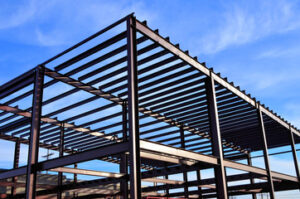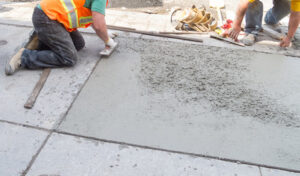Metal Buildings Oklahoma are the perfect solution for a variety of business needs. The customization options, short construction timeframe and durability make it an excellent choice for most businesses.

Before choosing a company to design and erect your metal building, ask them if they have experience with steel commercial buildings. A commercial contractor that has worked with steel building systems before will be more efficient than one who is new to the process.
When it comes to erecting a metal building on your property, you have many options to consider. Depending on what you plan to use the space for, you can customize your floorplan, select doors and windows, and even add skylights if desired. There are also plenty of color options that you can choose from to make the structure blend in with your property’s overall aesthetic or stand out and be a statement piece.
The most common color schemes for metal buildings are typically two-tone combinations. This look is achieved by using a dark roof and light paneling or vice versa. The colors can be as bold or muted as you want them to be, and some manufacturers offer premium paint coatings/finishes with finish warranties that protect your panels for years to come.
Another factor that can influence your color selection is what other structures are already on your property. If you have other buildings erected and painted with the same colors as your new steel building, it can create visual cohesion and tie together the entire landscape of your property.
When deciding on a color scheme, you should also think about what will work best with your region’s climate. It is a good idea to choose lighter colors, particularly on the roof, to help reflect the sun’s rays and keep the interior of your building cooler. This will lower your energy costs and save you money in the long run!
In addition to color, it is important to remember that metal buildings are a lot more durable than traditional building materials. This means that they are more resistant to damage and will hold up well in harsh weather conditions that may not be so kind to other types of buildings. The durability of metal buildings also makes them a cost-effective option, as they are cheaper to maintain and repair than other types of structures.
Metal buildings are a great way to expand your home or business without breaking the bank. Whether you are looking for a place to store equipment or vehicles, you can find the right size and color to fit your needs.
Lighting
Having the right lighting in your steel building is essential. It can make a difference in how you use the space, as well as in how the structure looks. It’s a highly underestimated facet of design. Proper lighting can enhance, detract, annoy, highlight, and hide features of your building or space. Lighting can also reduce your energy usage and help you save money.
Lighting is a great way to add a personal touch and to make your metal building look even better. You can choose from a variety of lighting options that will suit your taste and style. For example, LED lights are a popular choice for metal buildings because they offer energy efficiency, durability, brightness, and plenty of customization.
Lightning strikes are a big worry for many people when they invest in a steel building, but the good news is that it’s not as much of a problem as you might think. Steel conducts electricity much more easily than wood, so it redirects lightning strikes away from the building and its occupants. However, it’s still important to take safety precautions when you are inside a metal building during a thunderstorm.
Fortunately, metal buildings can be designed with plenty of features to make them more safe and comfortable. For example, they can be designed with extra loads to accommodate things like sprinkler systems, overhead cranes, specialized equipment, and more. In addition, steel industrial structures can be built with open floor plans that allow for maximum flexibility and space usage.
Steel buildings can also be equipped with skylights that bring in natural light. This is a great option because it can reduce your electricity costs by lowering the need for artificial lighting, and it can also improve employee productivity since people tend to be more productive when working in natural light.
Another thing to keep in mind is that you should always get a set of foundation drawings stamped by a licensed engineer before building your steel structure. These drawings will be required by your local building department in order to obtain a permit. If you don’t have these, the construction process will be delayed and your permit may be denied.
Landscaping
When choosing a location for your metal building, make sure you consider the surrounding landscaping. Not only can this add color and texture, but it can also help soften the look of the building. Avoid planting shrubs, bushes, or trees with hard branches that could scratch or damage the surface of the metal. Also, be aware that the roots of these plants may penetrate the foundation of the building.
Another way to increase the curb appeal of a prefabricated metal building is by adding windows. This can provide natural lighting and improve ventilation while making the space feel more inviting and homey. Additionally, you can add insulation to your metal building, which will help regulate temperatures, reduce noise, and enhance energy efficiency.
If you’re looking for a more rustic and traditional look, you can add barn doors, wood siding, or shiplap to the exterior of your metal garage or shed. Alternatively, you can install a lean-to on your steel building to create a hangout space for family and friends, or use it as a backyard workshop.
Lastly, you can further customize your metal building by adding seating arrangements, birdbaths, fountains, sculptures, and signs to the exterior. These details can help your metal shop or shed blend in with the rest of your property and give it a more welcoming appearance.
Whether you’re a DIY enthusiast, want to take on a new project over the weekend, or need extra storage space, a prefabricated metal building is an excellent option. It’s cost effective, durable, and can be designed to meet your specific needs. Plus, the fact that you can design and order these buildings while they’re in production means that you can get to work on your project as soon as possible. And with so many different style options to choose from, you’re sure to find a metal structure that meets both your aesthetic and functional requirements.
Door Height
Metal buildings are a popular choice for business and residential applications. They are a cost-effective solution to expand space and meet specific needs. However, there are some considerations to take into account when designing a steel building for optimum function and usability.
The first is to determine the intended use of the structure. This will help you decide the ideal size of your building. For example, if you plan to store large machinery or vehicles, a larger building may be required to accommodate them. You will also need to consider the height of your overhead doors. Ensure they are tall enough to accommodate any equipment you may buy in the future, as well as your existing machinery.
Another important factor to consider is the lighting options for your building. While lighting may seem like an afterthought, it can make a significant difference in the functionality of your steel building. Choosing the right lights can save you energy costs, increase visibility, and create a more welcoming environment. In addition to lighting, you should consider including insulated or uninsulated windows in your building. This will provide additional natural light, reduce utility costs, and help your building maintain a comfortable temperature throughout the year.
In addition to the size and lighting, the door height of your steel building is another vital element to consider. Overhead doors are available in both light-duty and heavy-duty styles, depending on your needs. For residential structures, such as steel storage buildings or garages, a light-duty door may be sufficient. For industrial-grade applications, such as workshops or auto shops, a heavy-duty door is a better option.
Lastly, you should consider the location of your building. Ideally, you should position your steel building in a convenient area, allowing you to access it easily and quickly. For example, if your steel building is going to be used as a car or truck garage, you should position it on a level surface with a driveway leading to it. This will allow you to easily park and remove vehicles without having to maneuver around your equipment.

